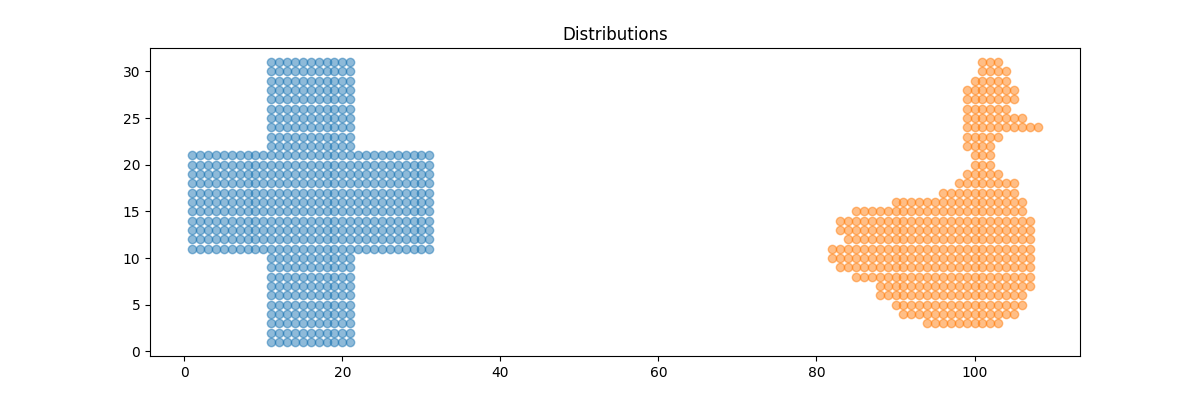Note
Click here to download the full example code
2D free support Wasserstein barycenters of distributions¶
Illustration of 2D Wasserstein barycenters if discributions that are weighted sum of diracs.
# Author: Vivien Seguy <vivien.seguy@iip.ist.i.kyoto-u.ac.jp>
#
# License: MIT License
import numpy as np
import matplotlib.pylab as pl
import ot
- Generate data
%% parameters and data generation
N = 3
d = 2
measures_locations = []
measures_weights = []
for i in range(N):
n_i = np.random.randint(low=1, high=20) # nb samples
mu_i = np.random.normal(0., 4., (d,)) # Gaussian mean
A_i = np.random.rand(d, d)
cov_i = np.dot(A_i, A_i.transpose()) # Gaussian covariance matrix
x_i = ot.datasets.make_2D_samples_gauss(n_i, mu_i, cov_i) # Dirac locations
b_i = np.random.uniform(0., 1., (n_i,))
b_i = b_i / np.sum(b_i) # Dirac weights
measures_locations.append(x_i)
measures_weights.append(b_i)
Compute free support barycenter¶
k = 10 # number of Diracs of the barycenter
X_init = np.random.normal(0., 1., (k, d)) # initial Dirac locations
b = np.ones((k,)) / k # weights of the barycenter (it will not be optimized, only the locations are optimized)
X = ot.lp.free_support_barycenter(measures_locations, measures_weights, X_init, b)
Plot data¶
pl.figure(1)
for (x_i, b_i) in zip(measures_locations, measures_weights):
color = np.random.randint(low=1, high=10 * N)
pl.scatter(x_i[:, 0], x_i[:, 1], s=b_i * 1000, label='input measure')
pl.scatter(X[:, 0], X[:, 1], s=b * 1000, c='black', marker='^', label='2-Wasserstein barycenter')
pl.title('Data measures and their barycenter')
pl.legend(loc=0)
pl.show()

Out:
/home/circleci/project/examples/plot_free_support_barycenter.py:69: UserWarning: Matplotlib is currently using agg, which is a non-GUI backend, so cannot show the figure.
pl.show()
Total running time of the script: ( 0 minutes 0.132 seconds)